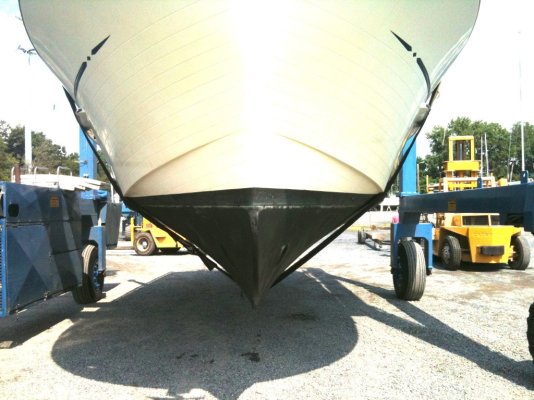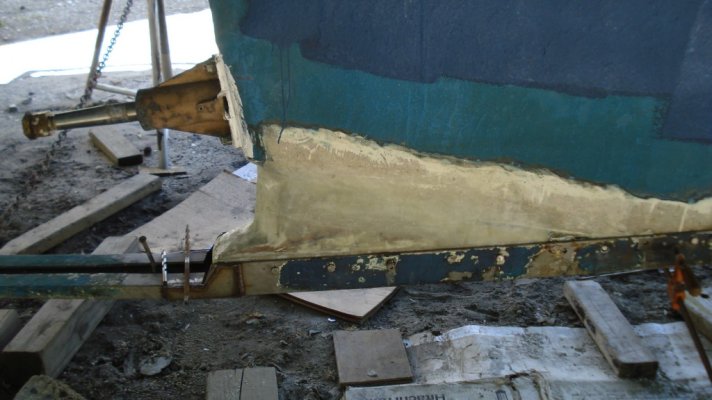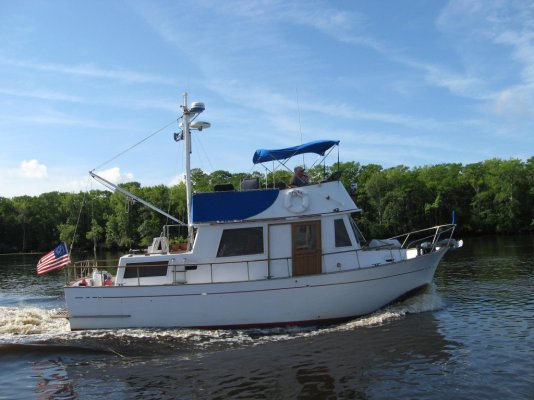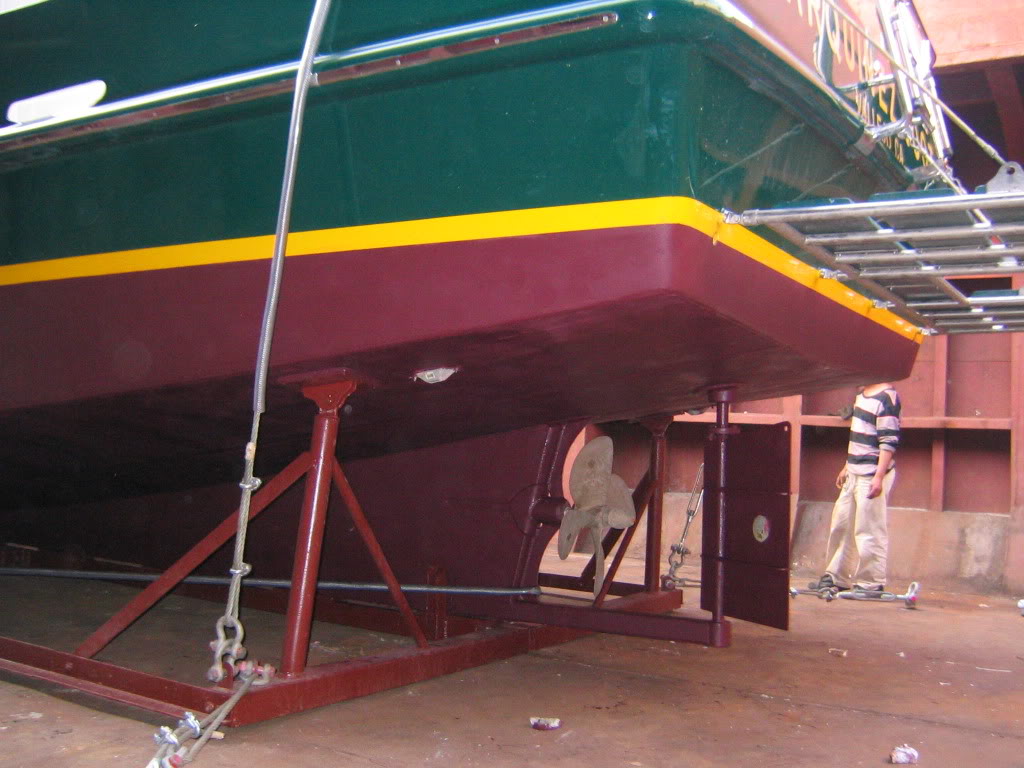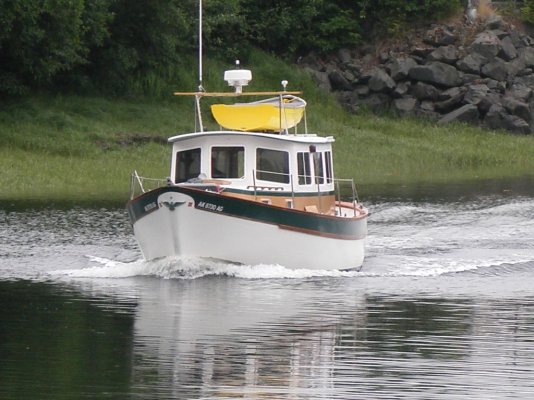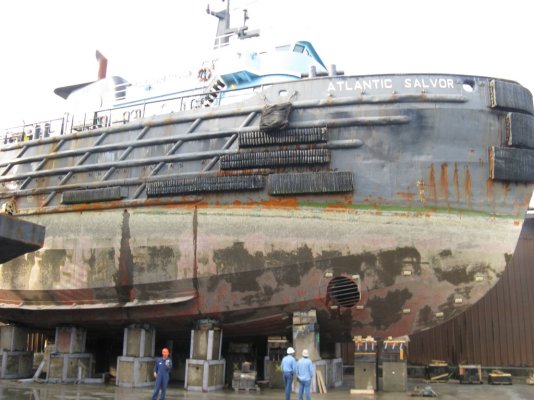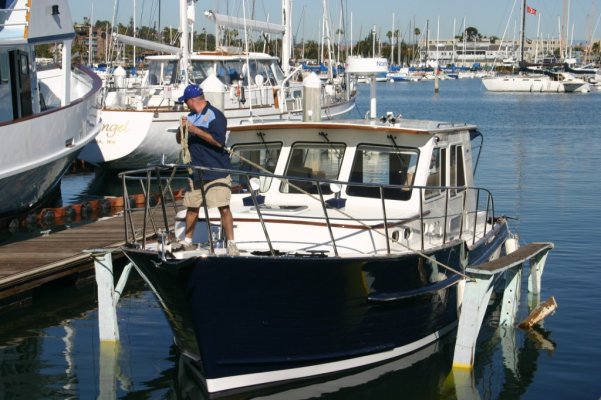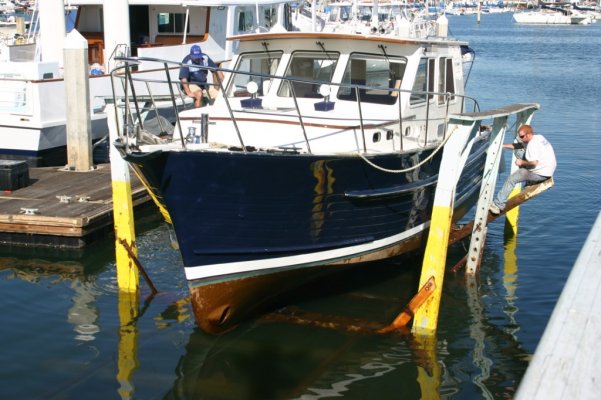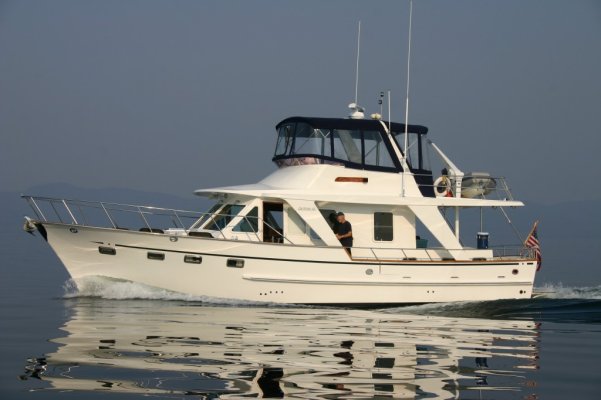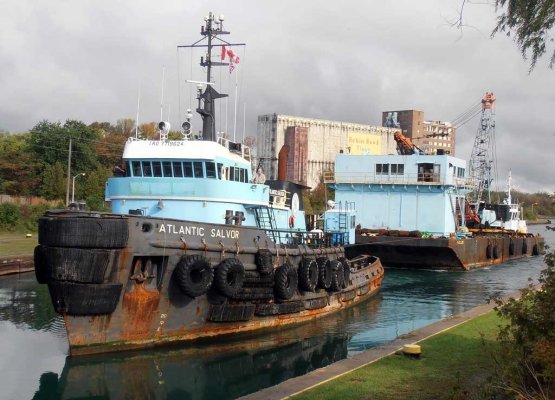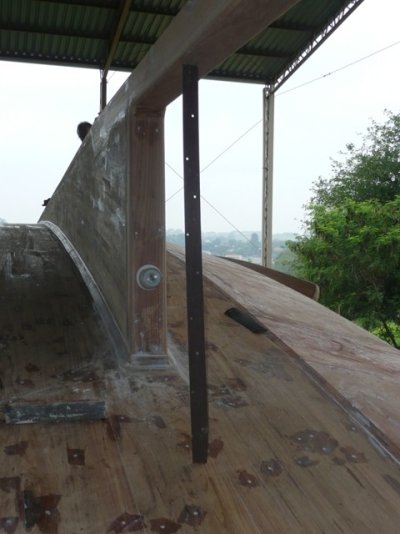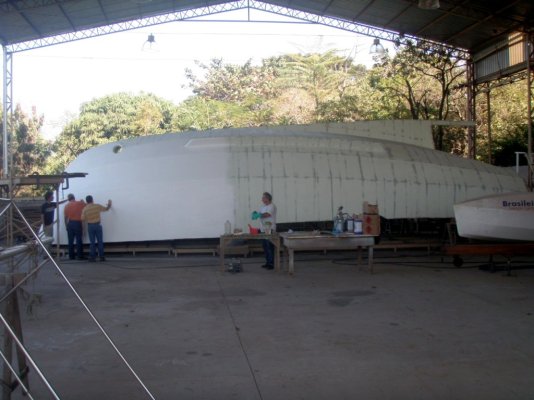Eric- What you can't see in those pictures is my "brakes", a 2200 hp twin screw tug to stop me. I would have him go 30% astern and pull the barge and him into the lock. As I approached the end of the lock, I would have him reduce to 10% , then I would take it out of gear and we would all stop. A standard maneuver in tight quarters for tugs. We did 15 locks in 2 days. The rudders give no trouble, she has quick steering (about 12 seconds hard over to hard over, but the clutches are kind of slow-around 8-10 seconds to engage (it can be an eternity while manuevering 975 tons around).
Carl
The grill on the bow is a bow thruster (300 hp 8-71). I don't know what the diameter of the tthruster prop is.
Since you were aboard last Feb, She hasn't stopped for more than a day or two. Much of the worn paint near the waterline is from working in the ice (Hudson river). The crane barge is there to lift a 120 ton barge section from the drydock floor to hang on the new barge so welders can attach it , 3 other sections will be attached in the next few weeks. That barge is surplus to the companies needs in NY, so it will become part of the shipyards dockside arsenal.




